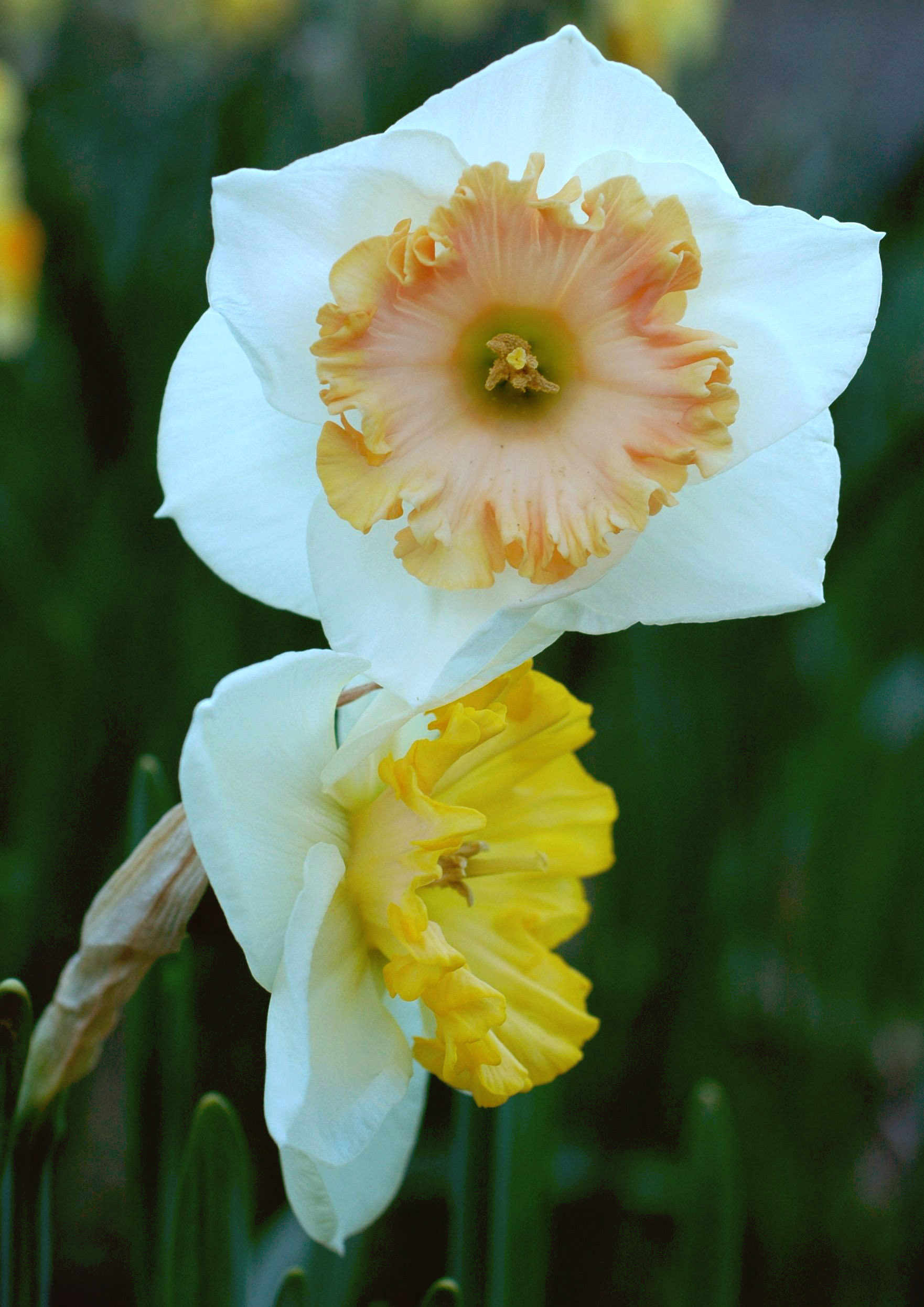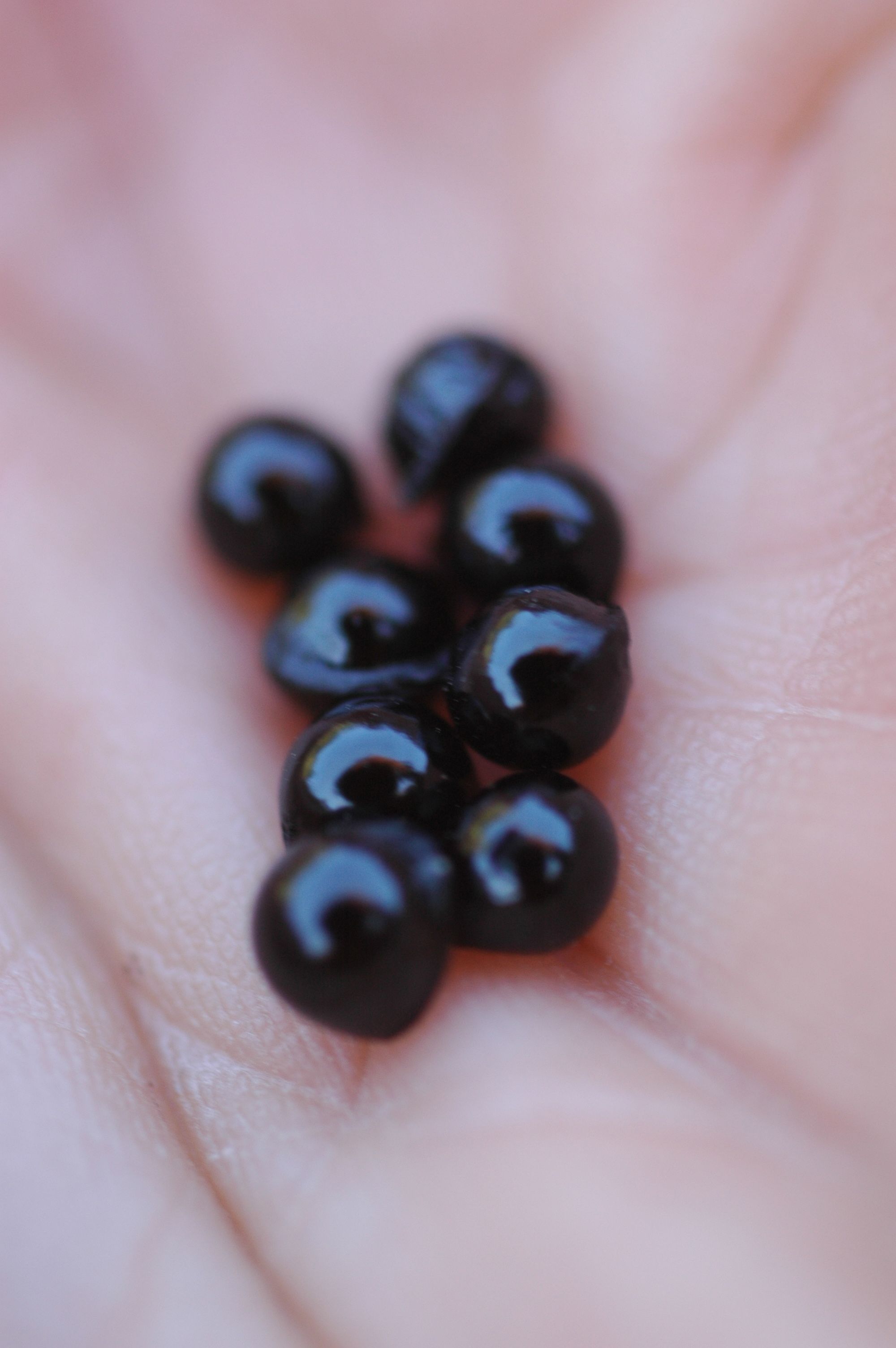As some of you may remember from the first installment I fell in love with a daffodil last year named Young Love. She was a mail order bride. I was seduced by the photos of her pearly perianth and frilly pink corona. Young love bloomed this April among many other new, and mostly lovely, narcissus varieties. I have to say that she wasn't as pink as I had dared to hope, though at the same time knew better than to expect; and so it seems to go with pink daffodils in general. But then we don't always get what is advertised or what we expected through our lustful, advertisement colored, fevered imaginations. Sometimes that may be just as well and what we do get may be as much or more valuable. Young Love did put on a lovely show and, along with all the other Grant Mitsch hybrids, had an excellent, heavy and even almost fleshy substance. When the first of them bloomed (integer) I was compelled to put its superior genes to use somehow and I went about crossing it with other early daffodils blooming at the time. Many mornings from that day through the bloom season I was to be found for a few minutes in mid morning snipping out stamens crusted with pollen from one flower and carrying them around with a pair of tweezers to dabble onto the female parts of another. I crossed whatever I liked the looks of without even looking up whether the varieties I was using were sterile, or virile, or made particularly good parents. Some didn't fertilize at all but many, no most, did.
When Young Love bloomed I was certainly not going to miss my chance to dabble in her genes. I added chromosomes to her girl parts and took her pollen elsewhere (Ok, so maybe she's hermaphroditic). I can't remember where I spread her wild oats or who's pollen I haphazardly smeared on her stigmas, but come a month or so later her seed pods began to swell with child as her foliage was declining for the long summer and autumn sleep of the daffodil. Heavy, swollen and pendulous, the seed pods held new possibility within them. The two pods produced only 8 seeds, far from the potential they held. Maybe I need to do it more than once? hmmmmmm....... I also saved seed from flower record (neat looking, but poor substance), altruist (unimpressed, I don't know why I bothered), hillstar (pretty cool), precocious (awesome), Integer (close to awesome), trigonometry (awesome), harpsichord (awesome), and pink declaration (again awesome) as well as a few miscellaneous flowers of unknown name (some of which were awesome-ish). Not a single flower seemed to be pollinated without my intervention, so I'm pretty sure they are all deliberate crosses (if that is not too strong a word for my techniques). At first I worried about rogue genes making their way into my chosen seed parents, but insects rarely seem excited about visiting the daffodil. Apparently it doesn't have much to offer and natural, fortuitous pollination is infrequent, at least around these parts.
The next stage is to grow the seeds out into tiny bulbs which will then be nursed along into larger bulbs until they flower at which time I get to find out what they look like. This is a long process by all accounts and it could be 3 to 5 years until the first flowers open. Not a prospect for the impatient, but age and hard experience have made deep inroads into that aspect of my character, and good riddance. It takes an average much greater than that provided by 8 seeds to wind up with a new daffodil worth naming and I imagine that it is very unlikely that any of my 70 odd seeds from various parents will produce anything worth adding to the already thousands of named varieties. Still, that doesn't mean that they won't be fit to look upon or propagate further for personal use or to give to friends. Then again, maybe one of our 8 seeds will survive the trek to flowering and become the next best-thing-ever. But its more about the adventure- the promise of novelty and the gamble of genetics. Its not a gamble that can't be influenced though and at least I get to pick the parents thereby increasing the odds, so who knows… Besides who doesn't love their buck toothed love child?…. Love Child, now there's a name for a daffodil. Stick around for five years and maybe you'll find out if our love children are hideous mutants or stunning beauties like their mother. They will probably be average at best, but I have a feeling I'll keep them around anyway. (Ok, I've stretched this whole analogy thing thinner than the petal of a substandard daffodil seedling.)







